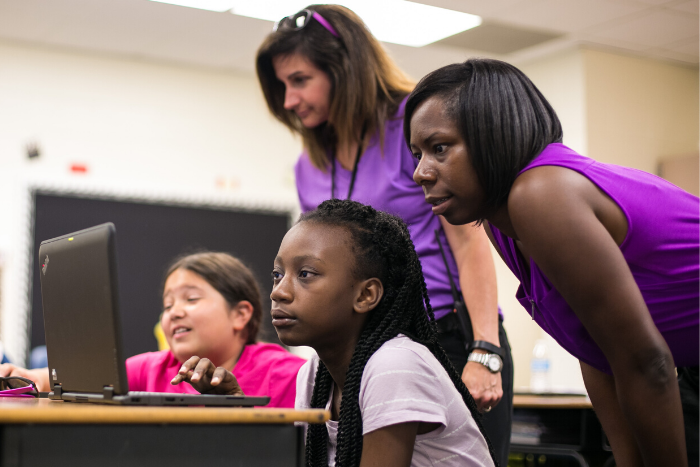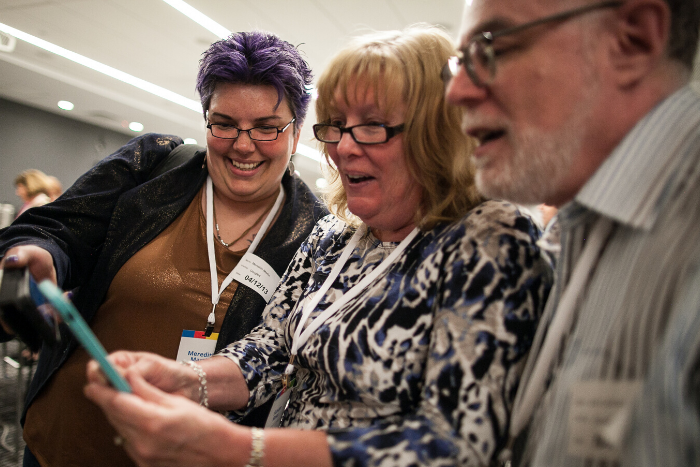Co-teaching still isn’t the norm in most schools. However, many teachers are finding that this is one of the most effective ways to address the needs of a wide range of students in a single classroom.
In today’s increasingly inclusive educational environment, teachers sometimes struggle to connect with students at both ends of the ability spectrum. This is where a co-teaching team can prove to be invaluable. By pairing a general education teacher with a specialist in their field, it’s possible to deliver lessons that cater to students at all levels.
How does co-teaching work?
Rather than taking students with specific educational needs out of the classroom, teachers can address students’ needs within the structure of a standard lesson by using a co-teaching arrangement. For example, in a class where a significant number of students speak English as their second language, a co-teach who is an EAL professional may deliver content that best suits the requirements of this group.
Did you know that Classcraft has a co-teaching feature? Learn how to manage your class with another teacher.
6 accepted co-teaching structures

There are many different definitions and recognition of co-teaching structures in classrooms. These include:
1. One teaching, one observing
One of the teachers instructs while the other observes how the students are learning, collecting data about their level of understanding to allow the team to more effectively plan for future lessons.
2. One teaching, one assisting
While one of the teachers leads the instruction, the other works with students who are struggling, regardless of whether they are special-needs students. This allows the lead instructor to devote more of their time to delivering the main content, with the assistant co-teacher helping the students to apply their knowledge.
3. Parallel teaching
Split students into two groups with the same material being presented by both teachers to their respective groups. Carefully selected groups to maximize all students’ success.
4. Station teaching
Both of the teachers take an active role in the instruction, with students divided into several groups and rotated between stations. Those stations may require students to undertake independent work or to work alongside a member of support staff as well as two stations that are overseen by the co-teachers.
5. Alternative teaching
One of the teachers will deliver instruction to the majority of the class while the other teachers lead a smaller group, providing them with specialized or intensive instruction.
6. Team teaching
The instructors teach the whole class together, either working on the same material at once with different groups or teaching the entire class by taking turns.
A key hallmark of co-teaching is that both of the teachers have the same level of responsibility and status, regardless of the lesson structure they use.
It can be challenging for teachers to work together in this kind of partnership in place of managing their own classroom. Therefore, co-teachers need to follow a code of best practice to make their relationship work to its best effect.
7 co-teaching best practices you can use right now!

1. Encourage mutual respect
It isn’t too surprising that having respect for each other is a vital part of any successful co-teaching relationship. Share ideas openly, and while disagreements are likely to occur at some point, they should be about the ideas and not the instructors themselves. Openly considering each other’s suggestions is important if you wish to reap the benefits of a co-teaching partnership.
2. Clearly define your responsibilities and roles
Nobody likes to have someone stepping on their toes. The best examples of co-teaching occur when both partners have a clear understanding of their own roles and responsibilities within the classroom. Reach a consensus on classroom procedures, acceptable student behavior, grading, homework policies, home/school communication, and scheduling. This ensures that you’re both on the same page whenever a conflict arises. Agreeing on these will take time, so co-teachers will need to arrange extra hours before and after school to make sure that they have this vital part of their arrangement in place.
3. Stay flexible
It’s difficult to try innovative new ideas, so it’s no wonder that many teachers prefer to use their old tried-and-tested strategies and activities. When you co-teach, you benefit from another perspective about how you could improve your delivery, assess your students, or change your resources. However, this also means you need to be open to new possibilities. Trying new things and embracing different and unfamiliar teaching practices may feel uncomfortable, but it can lead to some great successes in the classroom.
4. Plan together
The whole point of co-teaching is to bring together a pair of teachers who have their own experiences and expertise. While one may have skills in individualizing their instruction and curriculum to meet the specific needs of certain students, the other may have a broader knowledge of standards, the curriculum, and the desired outcomes for the majority of the class. Taking both perspectives into account is vital, and this requires sufficient planning time to be set aside so that both parties can add their talents to the mix. Planning isn’t just about instruction. It also includes the essential assessment component. Both partners must have equal input on designing tests, papers, and quizzes, as well as the content itself.
5. Embrace failure
Failure is an inevitable part of innovation. If a certain lesson fails, that isn’t the end of the world. After all, making mistakes is how we learn. Use your errors to help you avoid making the same mistake in the future, just as you would advise your students to do the same. Rather than taking things seriously, inject some humor into your work. Enjoy some laughter with your co-teacher, and don’t be afraid to show this side of yourself in front of your students.
6. Promote effective communication
All the planning in the world won’t help if you and your co-teacher are having communication issues. Good co-teachers won’t plan frequently to cover the standards and material. They will also communicate less formally through emails, messenger services, and texts to share ideas, information, questions, and updates with each other. You can also take advantage of apps like Google Docs and Classcraft to share documents, lesson plans, and feedback.
7. Get administrative support
It isn’t always easy to accept a co-teaching arrangement, especially if you have little notice about the possibility of such a situation arising. It’s even worse if you have no shared planning time or if you are being paired with a teacher who is new to the school and with whom you have never worked before. This is where getting some administrative support can help. Ask for a meeting to discuss the practicalities of your pairing, and request that the redistribution of some responsibilities so you can have a shared planning period. With that extra time, you can work on making your co-teaching relationship a success.
Embracing a co-teaching arrangement

Although it may not always be easy to work with a fellow professional in close quarters, it can prove to be a uniquely effective arrangement when it comes to delivering content to your students at a level and in a style that they can best engage with. If you’re in a co-teaching partnership, the seven tips mentioned here will help you get your working relationship off to the best possible start and ensure that both you and your class reap the benefits.
Photo: Google Edu
Classroom Management


